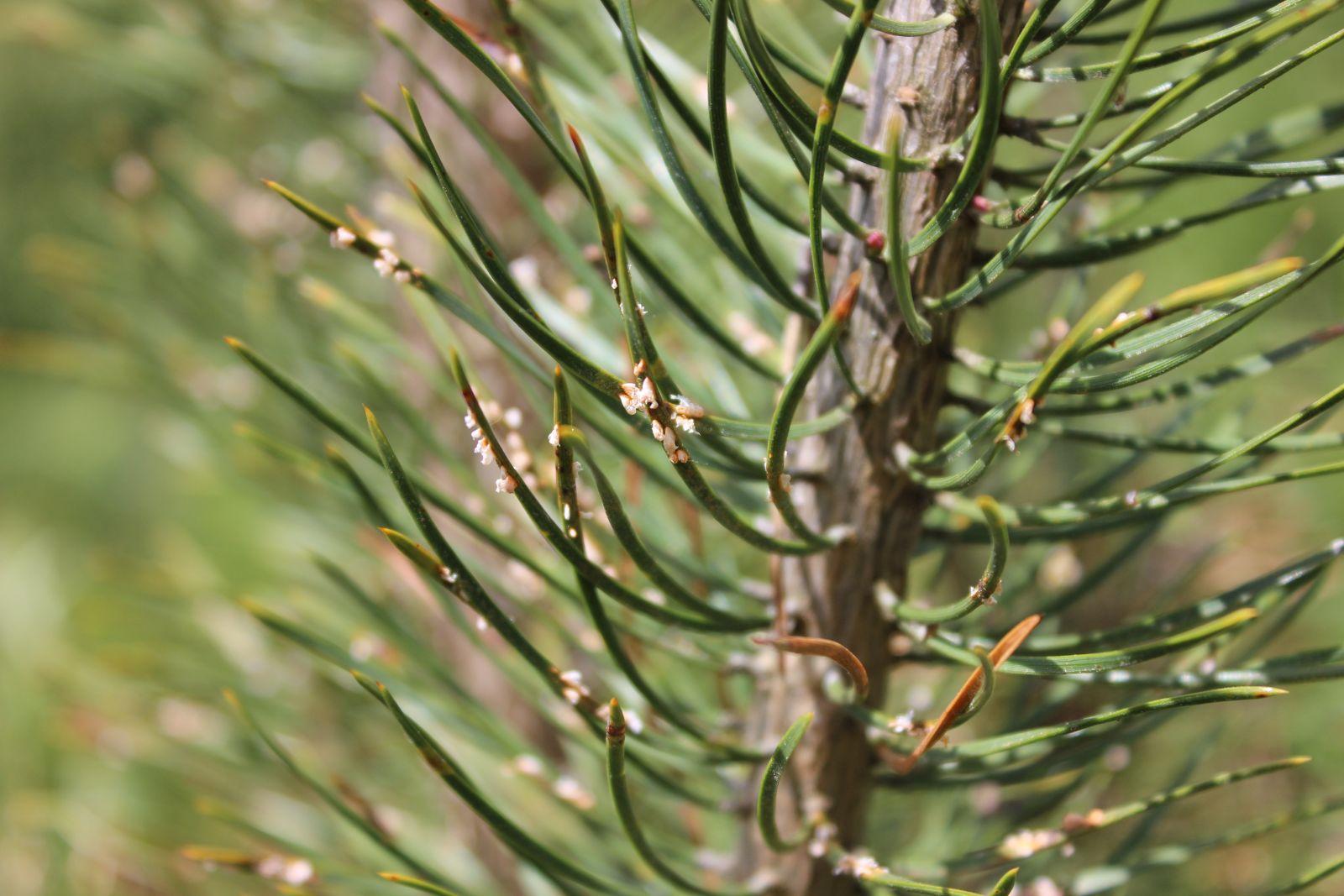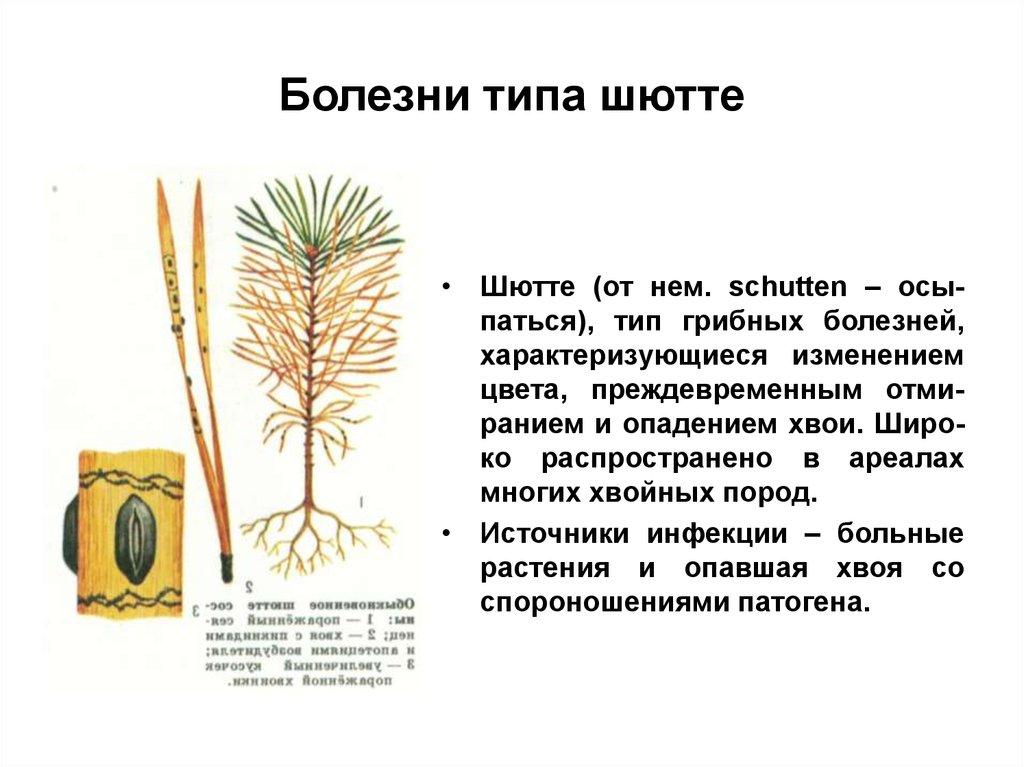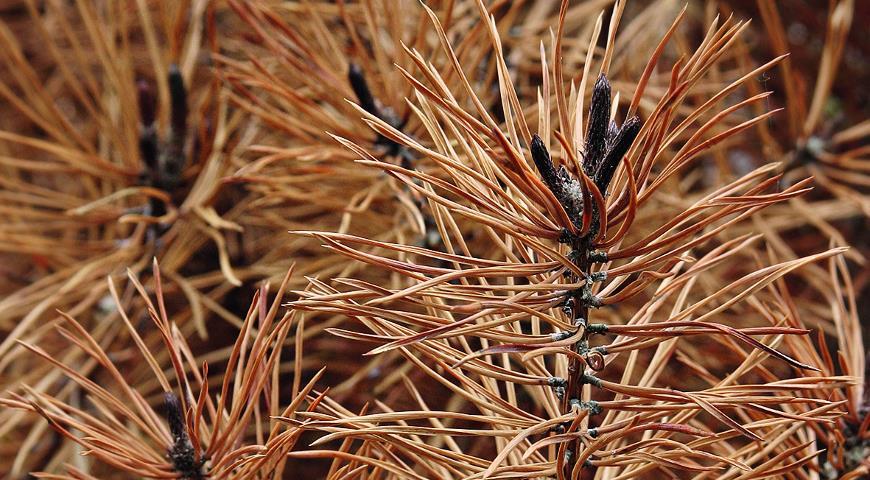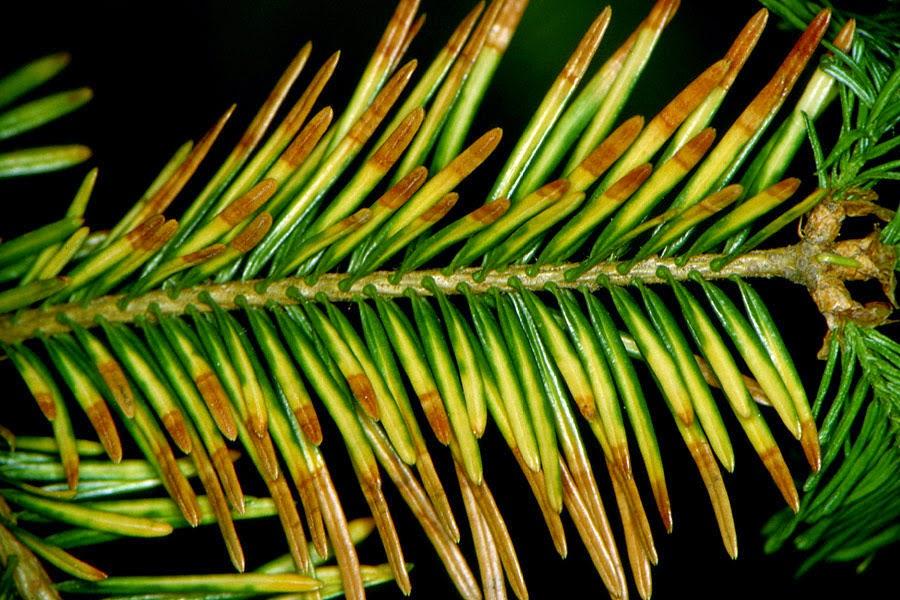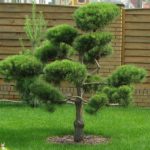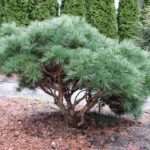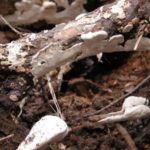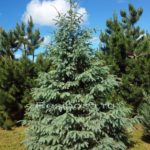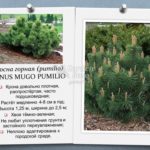Coniferous plants are often used in landscape design and can decorate any area. However, these cultures periodically face certain problems. Thus, shutte often appears on pine trees. This disease leads to changes in color and drying out of the needles. It becomes stained and crumbles. To cope with the disease, it is necessary to use special means.
What it is
Schutte represents a whole category of conifer pathologies.The name of the disease comes from the German word "schutten”, which translates as “crumble”. This suggests that with the development of pathology, the needles become covered with spots of different sizes - brown, red, light olive. Then they increase in size and lead to the needles drying out and falling off.
The cause of the disease is various mold fungi. Depending on the pathogen, there are different types of schutte - lowland, snowy, ordinary, gray. Pathology poses a particular danger to young and immature crops. If there is a massive infection with fungi, the tree may die.
Diseased plants or infected needles become sources of infections. Infection occurs in the fall with the spread of spores. In this case, the symptoms of the pathology appear with the arrival of spring and progress during the summer. The risk of developing the disease increases during a long spring, warm winter with a minimum of snow, during periods of drizzling precipitation or heavy dew.
Ordinary shutte
This is a rather dangerous pathology that is often found on pine trees. To avoid the death of a culture, it is important to take timely measures.
How to determine
The main sign of the common shutte is the redness of the needles. A little later, many black transverse stripes appear on the needles. In this case, the needles often remain on the branches until the next season. However, by the end of June or beginning of June, small oval-shaped apothecia form on it. They are repositories of spores of fungal microorganisms.
Methods of prevention and treatment
To avoid problems, plant seedlings should be purchased from specialized nurseries, where they are subject to phytosanitary control. When the site is located not far from a pine forest, the risk of developing pathology increases.
To avoid ordinary shutter, you should not plant pine trees in low places with stagnant moisture. It is also not recommended to place conifers in heavy clay soil. To cope with the disease, the plant should be treated with Zineb or Fundazol. You can also use colloidal sulfur.
Snow shutte
This type of Schutte is considered one of the most common. To cope with pathology, it is necessary to use fungicides.
Diagnostics
Infection of plant needles occurs in October or November - at low subzero temperatures. In this case, the needles become covered with a gray-white coating, reminiscent of a cobweb. It is a fungal mycelium that enters the stomata. This happens even in thick snow at a temperature of -5 degrees. The thicker the snow cover, the more the trees suffer.
In spring, the needles of the plant acquire a reddish color and dry out, but do not fall off. After some time, the shade becomes ashy, and the needles become fragile. This indicates the maturation of the fruiting bodies. The spread of spores is observed at the end of September and in October. Sometimes this happens in the middle of winter - during the thaw period.
How to treat
To avoid the development of pathology, it is recommended to plant plants in places without snow drifts and drifts. They should be placed away from weeds. Treatment with fungicidal substances is of no small importance. To do this, it is worth using colloidal sulfur, Benomyl, Bayleton. It is recommended to use such products after autumn precipitation.Thanks to this, the composition will remain on the plants before going under the snow cover.
Brown snow mold
This disease affects not only pines, but also cedars, junipers, fir and spruce. Infection occurs in the fall, when spores spread from dead needles. The fungus lives and reproduces under the snow. This occurs in conditions of high humidity.
Definition of infestation
When a plant is infected with brown snow mold, the needles become covered with dark mycelium in the form of a cobweb. It entwines needles and branches, gluing them together. In this case, the needles become brown and die, but do not fall off.
Prevention and treatment
To cope with the disease, it is necessary to accelerate the melting of snow with the arrival of spring. Pruning and burning affected branches is also important. The disease must be treated with the same fungicides.
Weymouth pines
This is a very attractive ornamental crop that often suffers from different types of schutte. Weymouth pine is parasitized by 2 types of fungi. When Leptostroma is infected, the needles on individual shoots suffer - they dry out and turn brown. There are small black bubbles along the needles - this stage indicates the beginning of fruiting.
How to cure
Most often, old Weymouth pine needles suffer, but young needles can also be colonized by pests. To cope with the disease, you need to use standard fungicides.
Schutte junipers
The development of pathology begins with the drying out of individual small shoots of the plant. However, pathology can spread rapidly, covering an entire culture. Apothecia often appear on dried needles. The rock variety “Sky Rocket” is more susceptible to the development of the disease.Also, pathology often develops on scaly juniper of different varieties.
General recommendations for protection
To avoid the development of schutte on pine, you must adhere to the following recommendations:
- Don't plant trees too close. Too dense plantings lead to reduced air circulation and increase the likelihood of disease development.
- Every year, clear the area of the site from fallen pine needles. Needles must be carefully collected and burned.
- Plant plants in well-lit areas that do not have stagnant moisture.
- Give preference to plants that can grow in a certain climate.
- Do not trim conifers with wet needles.
- If you suspect the development of fungal infections, do not sprinkle the crown. Otherwise, there is a high probability of fungal spores spreading along with the water.
- Do not plant pine trees in shady places and do not form them into dense hedges.
- Avoid exposure to stress factors. These include dry weather, deep planting and mechanical damage to the root system. All this aggravates the course of the disease.
- Prevent pest attacks and fungal infections. The fact is that all this aggravates the course of the disease and weakens the tree. As the branches at the bottom of the plant wither and die, they need to be pruned. This helps limit the spread of opportunistic microorganisms.
- In snowy winters, avoid accumulation of snowdrifts under young trees.
- Apply peat chips under trees. It helps speed up the melting of snow in the spring.
- Apply fungicides after the snow melts. They are used the second time when the growth reaches 2 centimeters in length.
- Thin out conifer plantings in a timely manner. It is important to avoid heavy shading of crops.
- Provide plants with quality care. In this case, it is necessary to use mineral fertilizers.
Pine schutte is a dangerous pathology that leads to negative consequences for the plant. In the most severe cases, the disease can even cause the death of a tree.

